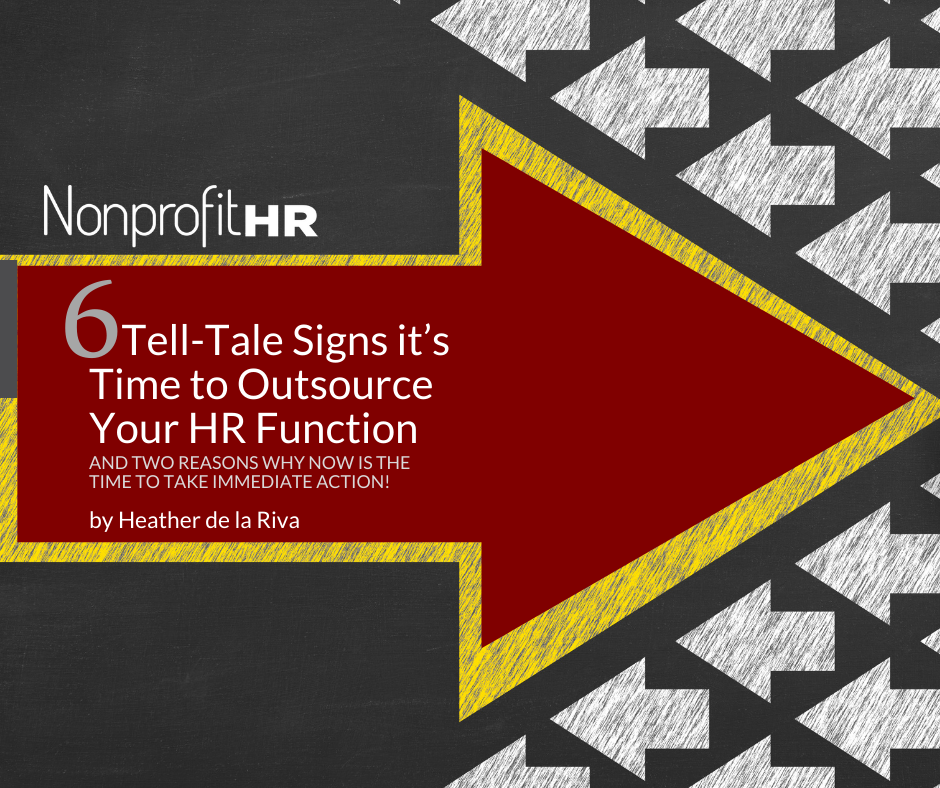WTOP: 5 ways nonprofits can…
By Leslie Beckbridge
Transition management is one of the biggest challenges that nonprofit organizations face when it comes to talent and leadership. Whether by choice or circumstance, positions are vacated and it should not be the exclusive responsibility of any one person to handle the situation. The human resources team should work in concert with senior leadership and, depending on the level of the position, the Board of Directors to bring in new talent with as few unpleasant consequences as possible. Staff turnover at any level of the organization for any reason can have far-reaching ripple effects that may be beneficial or detrimental to the whole team. There are a few common pain points in transition processes that our HR and talent acquisition teams navigate frequently. Read on for their tips and tricks of the trade.
One of the biggest pain points for organizations is a lack of planning. Unfortunately, this cannot be done retroactively and the problem is too often realized too late. Here, the key message is to plan ahead. Much like writing a will, planning for turnover ought to be done long before it is going to happen. In the event of executive turnover, is there someone within the organization poised to take over? If not, the Board of Directors and senior leadership must be prepared to conduct a search and manage the transition.
Regardless of whether you planned sufficiently, you must communicate broadly with staff and stakeholders to minimize tension and unease as changes occur. Generally, people feel more comfortable when they know what is happening and why so that they understand the situation. Turnover makes people nervous and transparency helps to calm these nerves. Employees especially want to know what a transition will mean for them individually. The group handling the transition should make decisions early on about what to communicate when and to whom so that stakeholders do not become distrustful of leadership.
Sometimes transitions happen suddenly, leaving human resources and leadership scrambling to navigate a search process while keeping stakeholders engaged, which sometimes means keeping the news of a sudden departure on a “need-to-know” basis. In these situations, while you may not want to broadcast the information to funders or your target community, it is advisable to keep relevant employees “in the loop.” Employee engagement can get into rocky territory with transitions. By including staff in the process, engagement should not suffer. Additionally, you can benefit from employee referrals to speed the search process and prevent gossip and further drama.
Whether you are dealing with a retiring CEO, a staff reduction or anything in between, rely on a senior HR leader or HR transition consultant for guidance. There are numerous implications involved in any turnover, planned or not, and following the lead of an expert can help things go more smoothly. There are factors to consider before, during and after a transition and it would be naïve to expect that things will continue with “business as usual” while these changes are in progress.
Keep in mind that the transition process doesn’t end as soon you have a new person in place. Early on after someone is brought on, the team should collectively establish norms, values and organization culture. A top-down approach where a new or existing leader determines these aspects and then communicates them to lower levels tends to be ineffective because the majority of people do not have a voice in the decision-making process. You can help to ensure a shared sense of purpose throughout the organization by coming to agreement at all levels on expectations and protocol from the beginning.
Turnover will likely continue to be a challenge for nonprofit organizations long into the future, but it does not need to be a painful reality. When organizations are prepared for these changes, things can run smoothly and result in better, stronger teams.
If your organization is struggling with a transition, call Nonprofit HR’s experts for support.





























